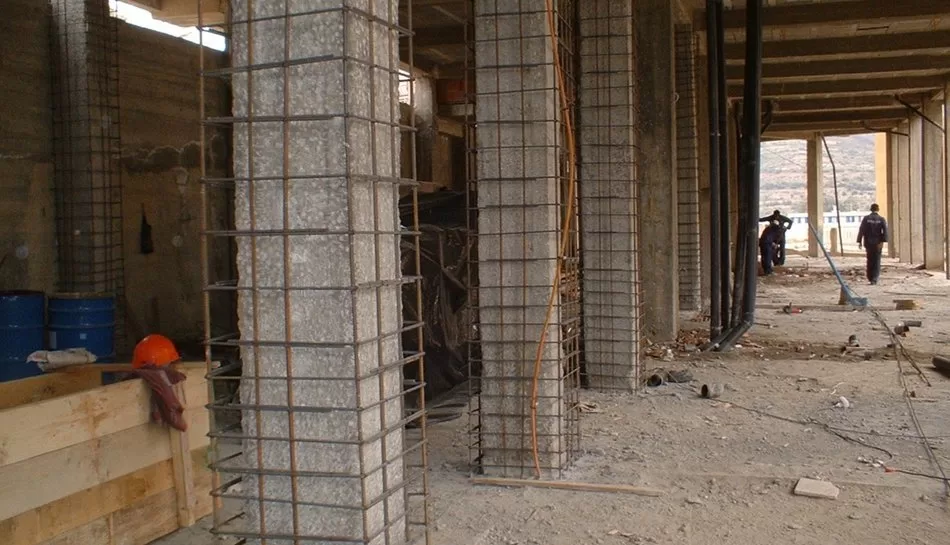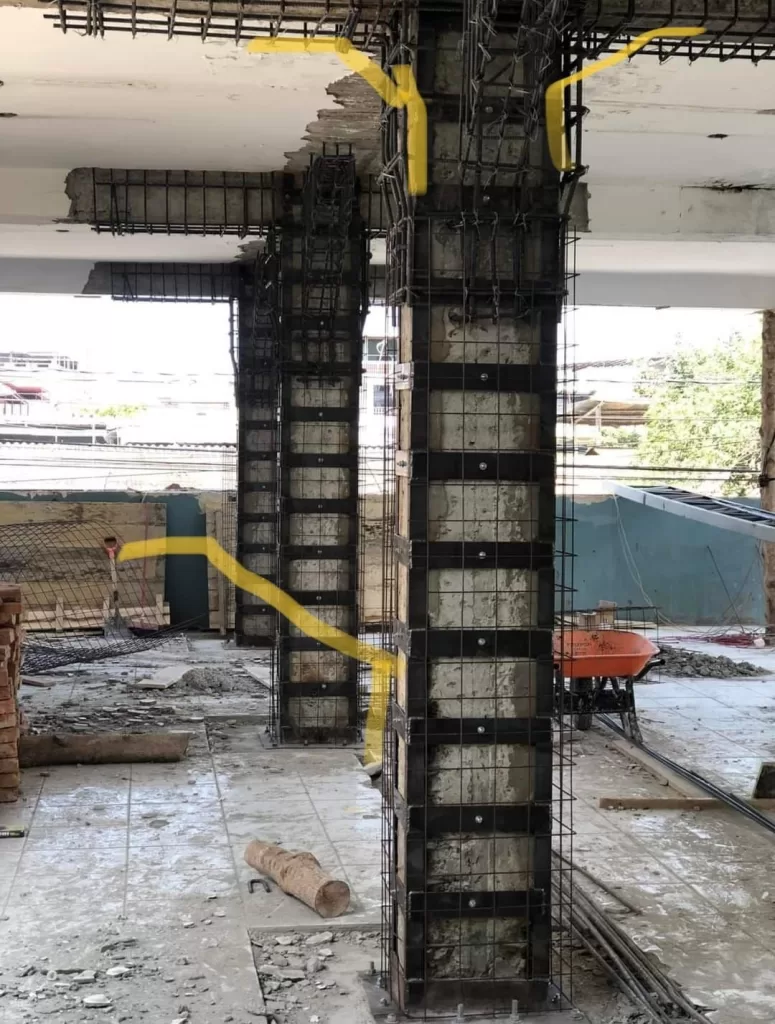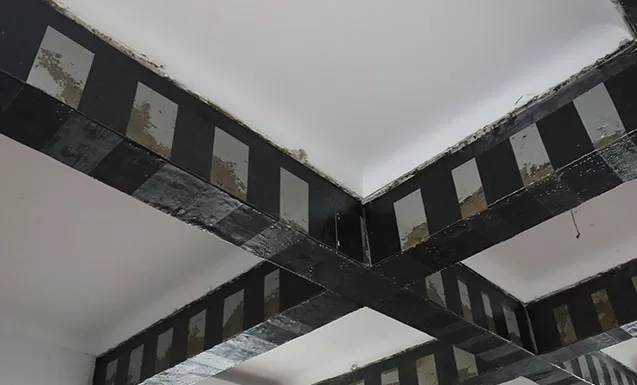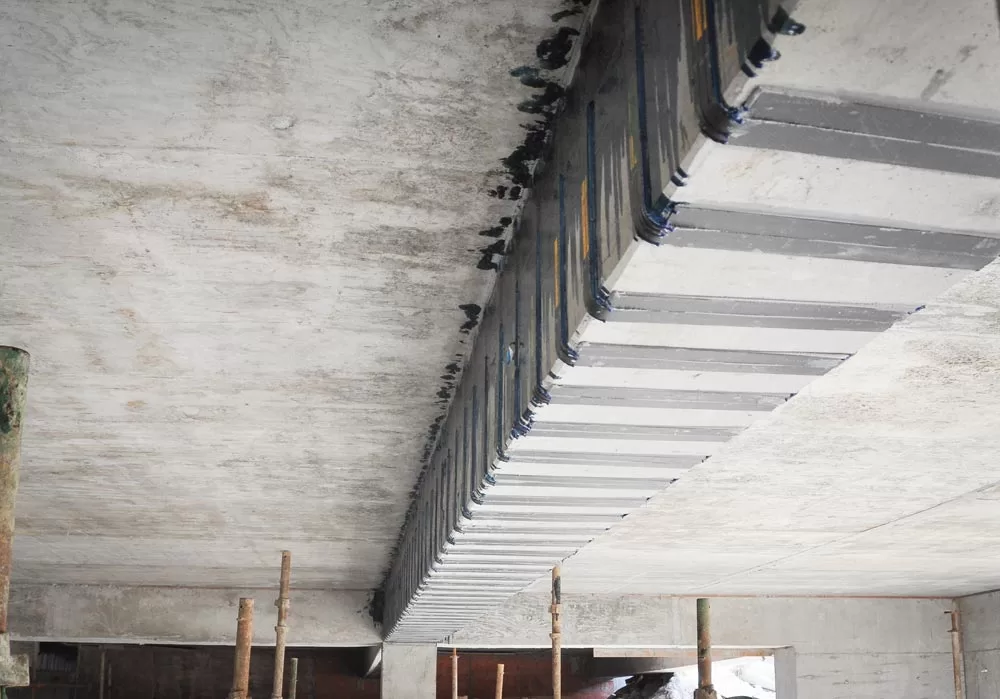Jacketing in Construction stands as a pivotal method in structural retrofitting and strengthening, aiming to enhance bearing load capacity post structural modifications or to restore integrity following a structural failure. This technique is primarily applied to vertical surfaces such as walls, columns, and various combinations like beam sides and bottoms. It involves the addition of concrete with longitudinal and transverse reinforcement around the existing structural member.
Jacketing is a versatile process applicable to a range of scenarios, from the repair of deteriorated columns, piers, and piles to underwater applications. The method is not limited to protecting and strengthening concrete but can also be applied to steel and timber sections, offering a comprehensive solution against further deterioration.
When is Jacketing in Construction Needed?
- Increased load carrying capacity of the column.
- Design errors or deficiencies in the original construction.
- Deterioration due to adverse weathering conditions.
- General dilapidation of columns over time.
- Severe damage caused by events like earthquakes or fires.
Advantages of Jacketing
- Enhanced seismic capacity of columns.
- Reduced construction effort as foundation strengthening is often unnecessary.
- Increased shear strength and confinement of concrete in columns.
- Minimal increase in the weight of the column, saving construction time.
7 Types of Jacketing in Construction
Jacketing in construction is like putting it on weights! It strengthens weak spots or boosts capacity using a “jacket” of extra material. From concrete to steel, discover 7 ways this clever technique gives structures a second wind!
#1 Reinforced Concrete Jacketing
Strengthening reinforced concrete members is a task that necessitates the expertise of a structural engineer, who should conduct thorough calculations for precision. The following are some suggestions to outline potential strengthening methods. For reinforced concrete (RC) columns, one effective approach involves jacketing, wherein an additional cage comprising longitudinal and lateral tie reinforcements is applied around the columns, followed by casting a concrete ring. A similar jacketing in construction technique can be employed for reinforced concrete beams. In this scenario, to secure the stirrup, it becomes necessary to drill holes through the slab.

#2 Steel Jacketing
Steel jacketing stands out as a highly effective method for augmenting the fundamental strength capacity of structural elements. Beyond providing ample confinement, steel jacketing acts as a safeguard against the deterioration of shell concrete-a primary factor contributing to bond failure and buckling of longitudinal bars. The process of steel jacketing involves encasing the section with steel plates and filling the gap with non-shrink grout. While this method proves highly effective in addressing deficiencies such as inadequate shear strength and insufficient splices of longitudinal bars at critical locations, it is essential to consider potential costs and address the fire resistance aspect.
In practical applications, the widely employed approach involves utilizing steel strips and angles for strengthening. Steel jacketing in construction projects plays a crucial role in restoring the strength, ductility, and energy absorption capacity of columns, demonstrating its effectiveness in retrofitting. Additionally, the use of steel jackets contributes to the enhancement of flexural strength and ductile behavior in lap-spliced columns, thereby improving the overall lateral performance of these structural elements.

#3 Fiber Reinforced Polymer (FRP) Jacketing
A widely adopted retrofitting technique involves the use of Fiber Reinforced Polymer (FRP) jacketing. Renowned for its advantageous properties, including a high strength-to-weight ratio, stiffness, excellent impact resistance, and heightened corrosion resistance in harsh environmental and chemical conditions, FRP stands out as a preferred material. Notably, FRP induces minimal alterations to the geometry of structural elements compared to other methods. This is most widely popular type of jacketing in construction.
In the context of retrofitting, FRP is applied to reinforce corroded rectangular columns, considering varying levels of corrosion and volumetric ratios. Test results underscore that the shear resistance of both the FRP and the column experiences an increase with higher volumetric ratios and a decrease with elevated levels of corrosion.

#4 Glass Fibre Reinforced Polymer Jacketing
Recent advancements in using composite materials for jacketing have significantly influenced the reinforcement and retrofitting of concrete structures. Notably, Glass Fiber Reinforced Polymer (GFRP) materials have found application in fortifying and enhancing reinforced concrete columns. The design considerations for glass-fiber-reinforced elements encompass fundamental properties under different forces, offering a unique combination of strength, flexibility, and durability. In this composite system, glass fibers play a key role as load-carrying members, while the surrounding matrix ensures precise placement and protection against environmental factors. The incorporation of glass fibers into the matrix, either in continuous or discontinuous lengths, adds versatility to meet diverse structural requirements.

#5 Near-Surface Mounted (NSM) Fiber-Reinforced Polymer Jacketing
In the Near-Surface Mounted (NSM) method, cuts are made into the covering concrete, and Fiber Reinforced Polymer (FRP) bars are inserted into these grooves, bonded with a suitable filler like epoxy paste or cement grout. Typically applied longitudinally, NSM FRP bars serve to augment the flexural strength of the column. This method is often employed in tandem with externally bonded FRP jacketing, leading to the development of a hybrid jacketing approach.

#6 Hybrid Jacketing in Construction
Hybrid jacketing in construction entails combining two or more distinct strengthening methods or materials to improve the seismic performance of a column. This approach leverages the advantages of each method involved. This section provides a summary of experimental studies that employ the hybrid jacketing approach in the strengthening and repair of Reinforced Concrete (RC) columns.

#7 Shape Memory Alloy (SMA) Wire Jacketing
Shape memory alloys, known for their superelasticity, durability, and shape memory effect, have garnered attention from various researchers for reinforcing structural elements. Furthermore, SMA alloys are regarded as a preferable alternative to Fiber Reinforced Polymer (FRP) retrofitting due to their advantages, including the absence of adhesive requirements, easy installation, and a reduced risk of peel-off issues.

CONCLUSION: Jacketing in Construction
Jacketing in construction plays a crucial role in strengthening and restoring the load capacity of structural elements. From traditional reinforced concrete jacketing to advanced materials like FRP and SMA, these techniques provide tailored solutions for diverse structural challenges, ensuring the resilience and longevity of buildings against various environmental and structural threats. Visit construcion xperts for more amazing content & news about construction.

